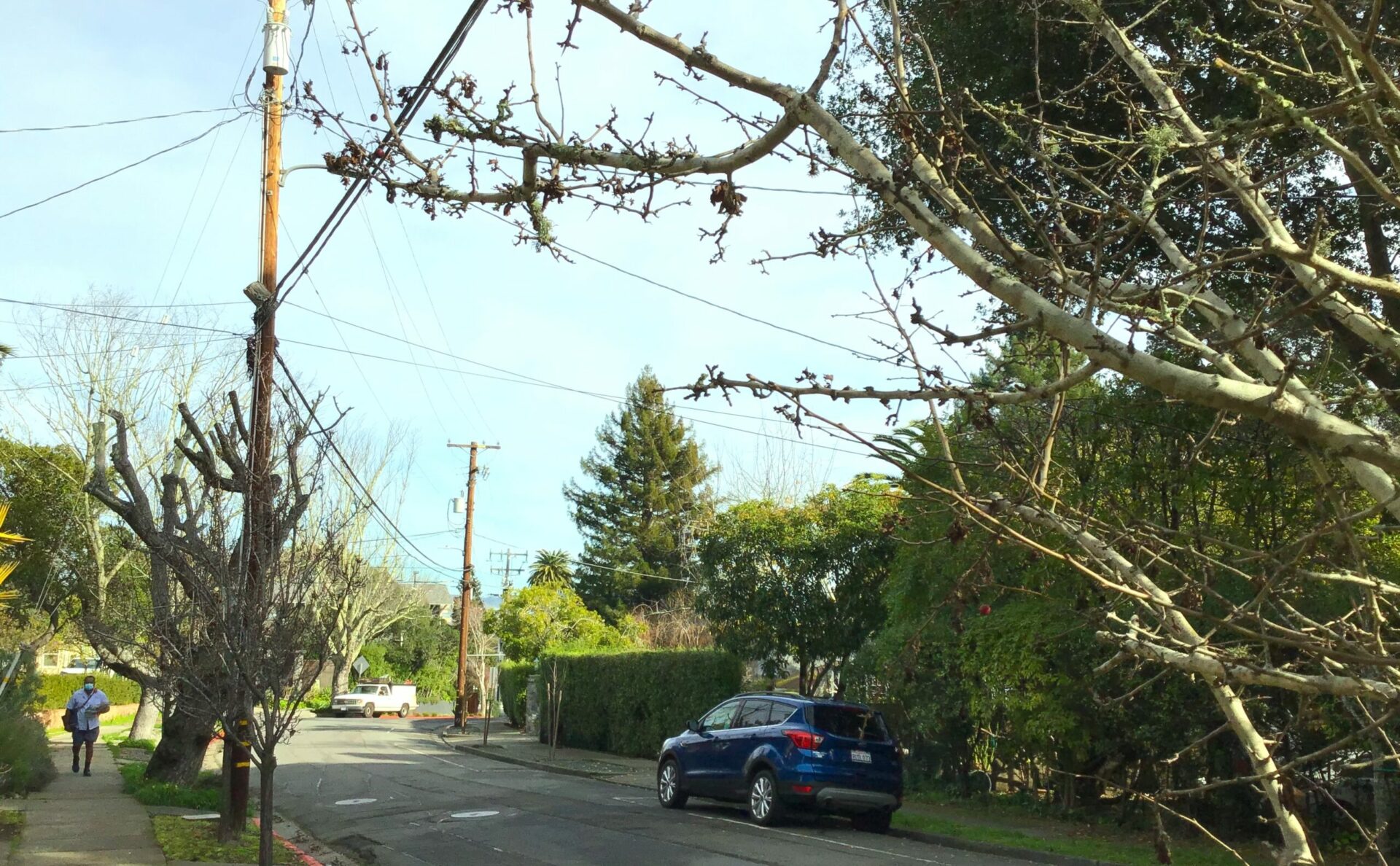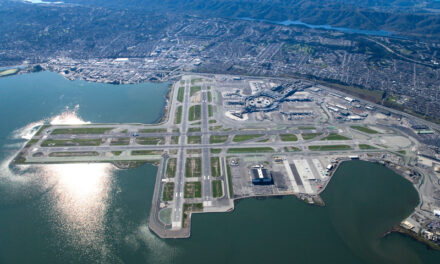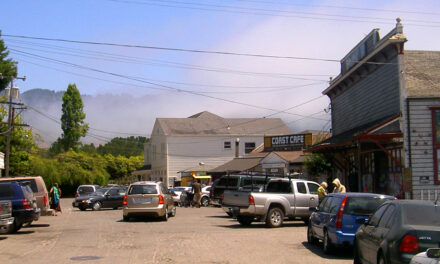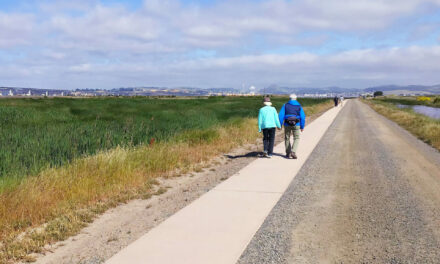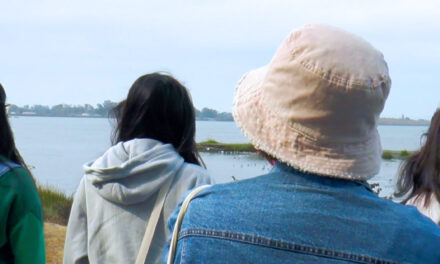Power Down, Safety Up for Christmas Hill
When an electrical pole goes down — whether felled by a 100-mile-per hour wind as in Boulder, Colorado after Christmas, or by a tree crashing into live wires, or even too many woodpecker holes — it carries so much more of a threat in the desiccated West than it used to. As residents sue power companies and FEMA foots burgeoning bills for lost towns and subdivisions, some cities are taking the initiative to reduce risk and smooth evacuation — like the North Bay town of Corte Madera.
Last fall, the Corte Madera town council approved a new underground district where PG&E, phone, Internet, and other utility lines will be buried on Lower Redwood Avenue and Edison Avenue at the base of the Christmas Tree Hill neighborhood. This well-populated area lies at the edge of fire-prone wildlands and woodlands.
Burying all overhead lines in a trench could not only reduce the chances of sparks setting nearby brush and trees aflame, but also keep key evacuation and access routes open, since a downed line across lower Redwood Avenue — a street thick with poles and overhead wires — could prevent residents from escaping and fire trucks from reaching any flames in the neighborhood.
Undergrounding is expensive and doesn’t always prevent fires (Coffey Park in Santa Rosa, for example, still burned in the 2017 Tubbs Fire despite underground utilities). But Corte Madera planners, engineers, and community members identified wildfire as a particular worry, and undergrounding as a priority, in their 2021 Climate Adaptation Assessment. The town had also suffered through enough public safety power shutoffs, and seen enough shortfalls in PG&E maintenance, to push for the project.
Town leaders also wanted to ensure they could use valuable funds and credits toward the project from PG&E’s Rule 20A program, whose future has been in question. The program supports conversion to underground lines for projects that meet various criteria (such as density of overhead lines) and offer health and safety benefits, like preventing wildfire and easing evacuation.
“We’re still in the process of analyzing our other fire-prone areas of town, but based on what we already know about Christmas Tree Hill’s vulnerabilities to fire and its limited access routes, we felt it was prudent to initiate this project right away,” says Ron Suokko, Corte Madera’s director of public works.
Still in its preliminary engineering phases, the project includes about 1,200 feet of mainline plus 1,800 feet of service laterals that connect to homes. The hope is that after spending an estimated $4 million to get utilities out of the way, Christmas Hill may be more resilient the next time flames sweep through Marin.
Other Recent Posts
Assistant Editor Job Announcement
Part time freelance job opening with Bay Area climate resilience magazine.
Training 18 New Community Leaders in a Resilience Hot Spot
A June 7 event minted 18 new community leaders now better-equipped to care for Suisun City and Fairfield through pollution, heat, smoke, and high water.
Mayor Pushes Suisun City To Do Better
Mayor Alma Hernandez has devoted herself to preparing her community for a warming world.
The Path to a Just Transition for Benicia’s Refinery Workers
As Valero prepares to shutter its Benicia oil refinery, 400 jobs hang in the balance. Can California ensure a just transition for fossil fuel workers?
Ecologist Finds Art in Restoring Levees
In Sacramento, an artist-ecologist brings California’s native species to life – through art, and through fish-friendly levee restoration.
New Metrics on Hybrid Gray-Green Levees
UC Santa Cruz research project investigates how horizontal “living levees” can cut flood risk.
Community Editor Job Announcement
Part time freelance job opening with Bay Area climate resilience magazine.
Being Bike-Friendly is Gateway to Climate Advocacy
Four Bay Area cyclists push for better city infrastructure.
Can Colgan Creek Do It All? Santa Rosa Reimagines Flood Control
A restoration project blends old-school flood control with modern green infrastructure. Is this how California can manage runoff from future megastorms?
San Francisco Youth Explore Flood Risk on Home Turf
At the Shoreline Leadership Academy, high school students learn about sea level rise through hands-on tours and community projects.






